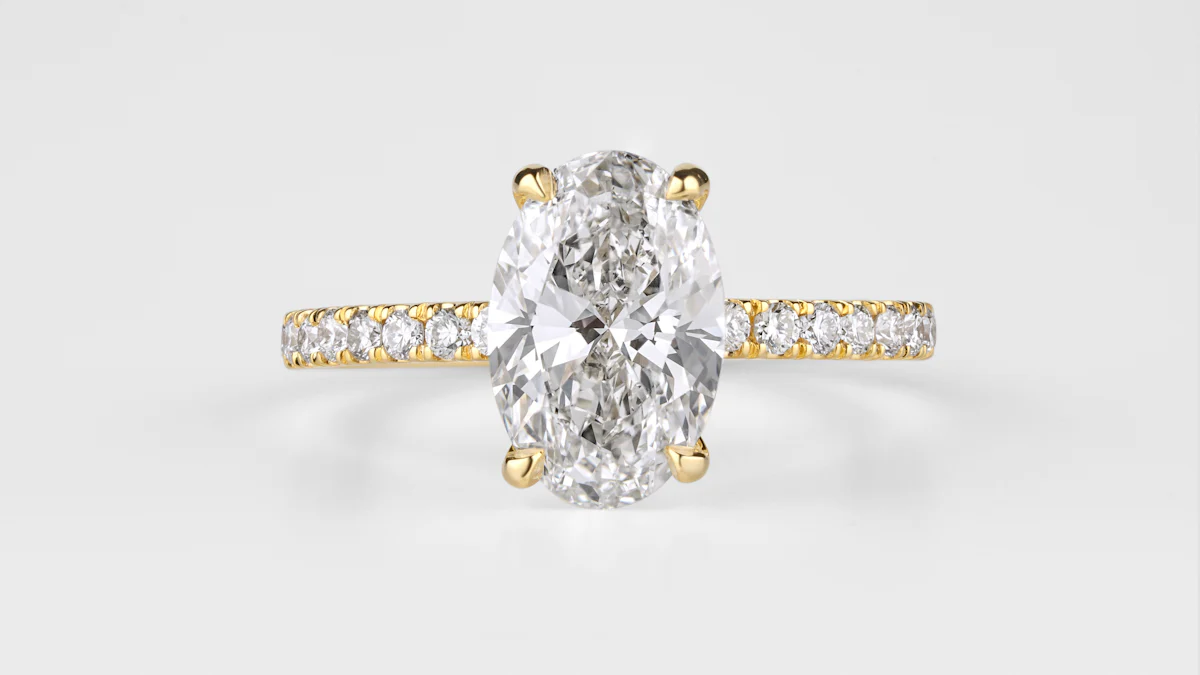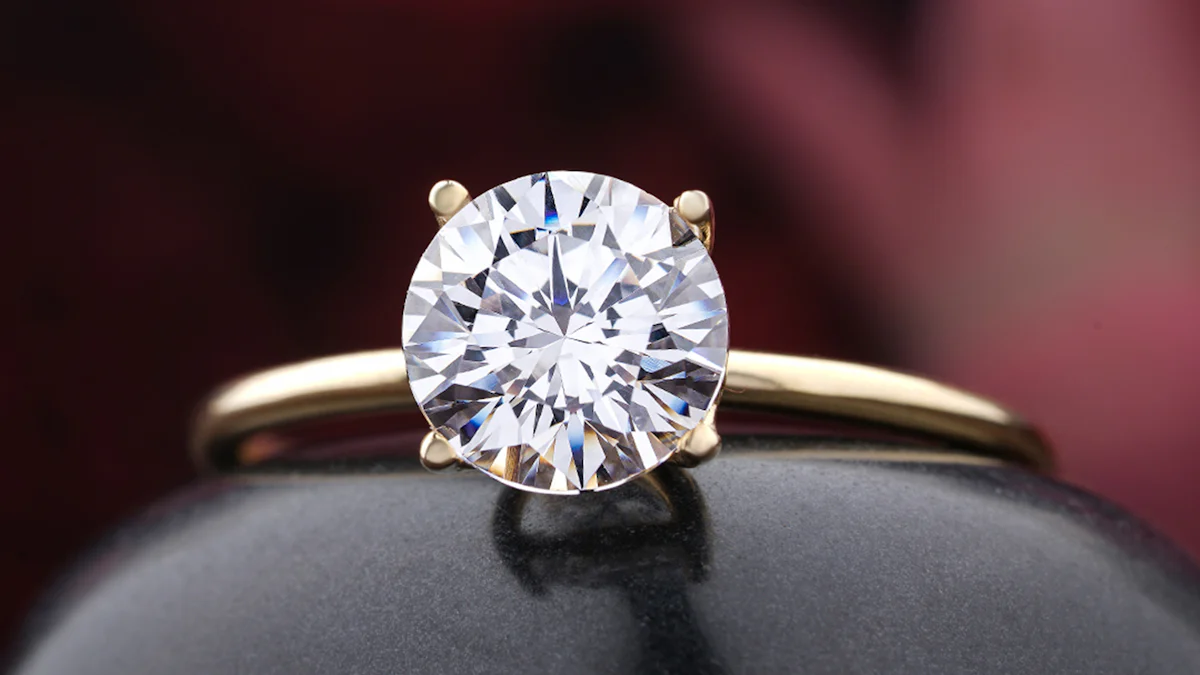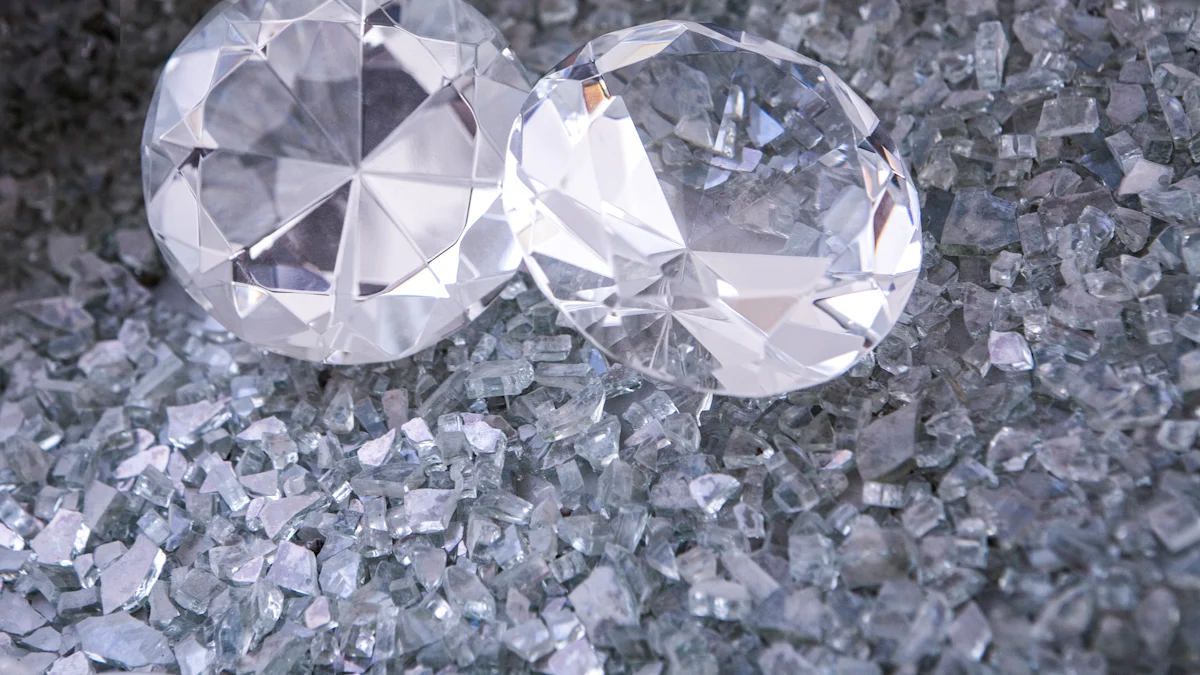How Big is 2.25 Carat Diamond

Diamonds captivate with their sparkle and elegance. The size of a diamond, like a 2.25 Carat Diamond, plays a crucial role in its allure. Larger diamonds often command higher prices due to their rarity. Understanding the relationship between carat weight and value helps you make informed decisions. Even a small difference in carat weight can significantly impact cost. Knowing how size influences perception and price ensures you choose a diamond that truly shines.
Understanding the 2.25 Carat Diamond

What is Carat?
Definition and Measurement
Carat represents the weight of a diamond. The term "carat" comes from the carob seeds that merchants used in ancient times as counterweights on balance scales. One carat equals 0.200 grams, or 1/5 of a gram. This measurement is divided into 100 points, making it easy to express the weight of smaller diamonds. For example, a 0.50-carat diamond is often referred to as a 50-point diamond. A 2.25 Carat Diamond weighs 2.25 times more than a single carat, which makes it a substantial choice for those seeking a larger stone.
Historical Context
The concept of carat weight has a rich history. Ancient traders used carob seeds due to their uniform weight. This practice evolved over time, leading to the modern metric carat system. The standardization of carat weight helped create a universal understanding of diamond size. This consistency allows buyers to compare diamonds easily. A 2.25 Carat Diamond today holds the same weight across the globe, ensuring clarity in transactions.
How Carat Affects Size
Visual Perception
Carat weight significantly influences how big a diamond appears. However, carat weight does not always equal face-up size. A well-cut diamond maximizes its visual appeal, making it look larger. A 2.25 Carat Diamond can appear more impressive with the right cut. The depth and table size affect how light reflects within the diamond. A poorly cut diamond may seem smaller despite having the same carat weight.
Comparison with Other Carat Sizes
Comparing a 2.25 Carat Diamond with other sizes highlights its substantial presence. Smaller diamonds, like a 1-carat diamond, offer a different visual impact. A 2.25 Carat Diamond provides a noticeable difference in size and sparkle. Larger diamonds are rarer, which increases their desirability and value. A 2.25 Carat Diamond often commands attention due to its size and brilliance. Buyers should consider how carat weight aligns with personal preferences and budget.
Factors Affecting Diamond Quality and Value

When buying a 2.25 Carat Diamond, understanding the factors that affect quality and value is crucial. These factors guide you in making an informed decision. The Four Cs of diamonds play a significant role in determining a diamond's worth.
The Four Cs of Diamonds
Carat
Carat weight measures the size of a diamond. A 2.25 Carat Diamond stands out due to its substantial weight. Larger carat weights often mean higher prices. However, carat weight alone does not determine a diamond's beauty or value. You should consider other Cs to get the complete picture.
Color
Color affects a diamond's appearance. Most diamonds have slight color variations. The Gemological Institute of America (GIA) grades diamonds on a scale from D (colorless) to Z (light color). A 2.25 Carat Diamond with less color appears more brilliant. Colorless diamonds are rare and more valuable. You should choose a color grade that suits your preference and budget.
Clarity
Clarity refers to the presence of internal or external flaws, known as inclusions and blemishes. The GIA clarity scale ranges from Flawless (no inclusions visible under 10x magnification) to Included (inclusions visible to the naked eye). A 2.25 Carat Diamond with fewer inclusions looks clearer and more appealing. You should aim for a clarity grade that balances beauty and cost.
Cut
Cut influences how a diamond reflects light. A well-cut diamond sparkles more. The cut grade ranges from Excellent to Poor. A 2.25 Carat Diamond with an excellent cut maximizes its brilliance. You should prioritize cut when selecting a diamond, as it greatly impacts visual appeal.
Additional Considerations
Certification
Certification provides assurance of a diamond's quality. Reputable labs like GIA or the American Gem Society (AGS) offer unbiased evaluations. A certified 2.25 Carat Diamond gives you confidence in your purchase. You should always request a certificate when buying a diamond.
Market Trends
Market trends can influence diamond prices. Economic factors, fashion trends, and demand affect value. A 2.25 Carat Diamond may fluctuate in price based on these trends. Staying informed about market conditions helps you make a smart investment. You should consider timing and market dynamics when purchasing a diamond.
Practical Considerations for Buying a 2.25 Carat Diamond
Buying a 2.25 Carat Diamond involves more than just picking a stone. You need to consider several practical aspects to make the best choice. Let's dive into some key considerations.
Budgeting for a 2.25 Carat Diamond
Price Range
The price of a 2.25 Carat Diamond can vary widely. Factors like color, clarity, and cut play a big role in determining the cost. A higher carat weight often means a higher price per carat. Prices increase exponentially as carat weight goes up. You should expect to pay a premium for a 2.25 Carat Diamond due to its substantial size. It's wise to research current market prices to set a realistic budget.
Financing Options
Paying for a 2.25 Carat Diamond upfront might not be feasible for everyone. Many jewelers offer financing options to help spread out the cost. You can explore payment plans that fit your financial situation. Some stores provide interest-free financing for a limited period. This option can ease the burden of purchasing a larger diamond. Always read the terms carefully to avoid unexpected charges.
Choosing the Right Ring Design
Setting Styles
The setting style can enhance the beauty of a 2.25 Carat Diamond. A classic solitaire setting showcases the diamond's size and brilliance. Halo settings add extra sparkle by surrounding the center stone with smaller diamonds. Three-stone settings symbolize past, present, and future. Each setting style offers a unique look. Consider what style aligns with your personal taste and lifestyle.
Metal Choices
The choice of metal affects the overall appearance of the ring. Platinum provides a durable and elegant option for a 2.25 Carat Diamond. White gold offers a similar look at a lower price point. Yellow gold adds a warm, traditional touch. Rose gold has gained popularity for its romantic hue. The metal you choose should complement the diamond and suit your skin tone.
A 2.25 carat diamond offers a striking balance of size and brilliance. Understanding the nuances of carat weight, cut, color, and clarity ensures you make a wise choice. Consider your budget and explore financing options to find the perfect fit. Personal preference should guide your selection. The diamond's appearance and emotional impact matter most. Lab-created diamonds provide excellent value and look identical to natural ones. Small changes in color or clarity can significantly affect price. Equip yourself with technical knowledge for smart shopping comparisons. Confidently choose a diamond that reflects your unique style and love story.
See Also
Comparison of Prices for All-Around Diamond Rings
Exploring Diamond Cuts in Engagement Ring Designs
Comprehensive Analysis of Lab Grown 5 Carat Diamond Tennis Bracelet

